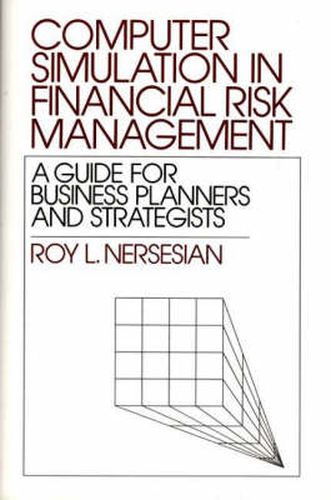Readings Newsletter
Become a Readings Member to make your shopping experience even easier.
Sign in or sign up for free!
You’re not far away from qualifying for FREE standard shipping within Australia
You’ve qualified for FREE standard shipping within Australia
The cart is loading…






Computer programs that simulate complex processes in the real world can provide a quantitative tool for determining how much debt can be added safely to a company’s capital structure. The increasing number of bankruptcies and defaults in today’s international business arena result from debt overload and point to major shortcomings in the conventional financial evaluation process. In this book, Roy L. Nersesian describes why current methods of risk management fail and how computer simulation can be employed to determmine the safe level of debt more accurately. Because the decision to add debt to an organization requires favourable, and essentially independent, decisions from both the borrower and lender, it is necesary to quantify both perspectives. Through actual examples readers will learn how to do this and to translate an actual business situation into a simulation model or program. The book presents the concept of simulation in terms that can be understood by generalists in corporations and financial institutions. At the same time, it provides computer programmers with an understanding of risk management principles. It seeks to provide a valuable resource for: financial executives, planners and strategists in corporate and governmental organizations; bank lending officers; and computer programmers working with these organizations.
$9.00 standard shipping within Australia
FREE standard shipping within Australia for orders over $100.00
Express & International shipping calculated at checkout
Computer programs that simulate complex processes in the real world can provide a quantitative tool for determining how much debt can be added safely to a company’s capital structure. The increasing number of bankruptcies and defaults in today’s international business arena result from debt overload and point to major shortcomings in the conventional financial evaluation process. In this book, Roy L. Nersesian describes why current methods of risk management fail and how computer simulation can be employed to determmine the safe level of debt more accurately. Because the decision to add debt to an organization requires favourable, and essentially independent, decisions from both the borrower and lender, it is necesary to quantify both perspectives. Through actual examples readers will learn how to do this and to translate an actual business situation into a simulation model or program. The book presents the concept of simulation in terms that can be understood by generalists in corporations and financial institutions. At the same time, it provides computer programmers with an understanding of risk management principles. It seeks to provide a valuable resource for: financial executives, planners and strategists in corporate and governmental organizations; bank lending officers; and computer programmers working with these organizations.